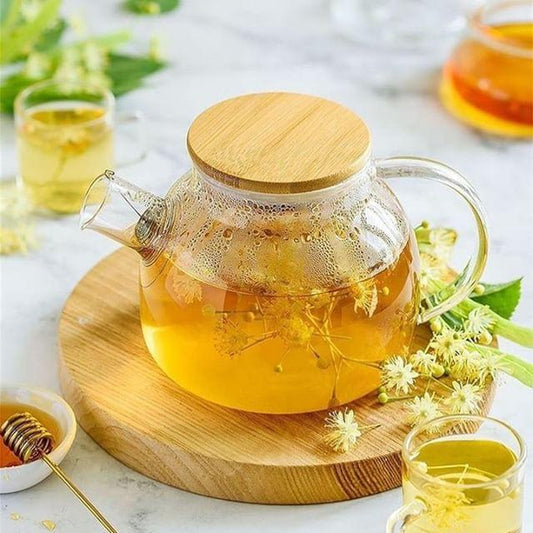The Lost Art of Pickling: Reviving Old-School Food Preservation at Home

Pickling is an ancient technique that preserves food, enhances flavors, and brings a tangy twist to dishes. From tangy cucumbers to spicy kimchi, pickling has been used across cultures to extend the shelf life of vegetables, fruits, and even eggs. In recent years, this time-tested method has enjoyed a resurgence as home cooks explore its flavors and health benefits. Here’s a guide to reviving the art of pickling in your kitchen, with tips, techniques, and a few starter recipes to get you going.
Why Pickling Is Making a Comeback
Pickling is a fun and versatile method of food preservation that offers:
- Health Benefits: Naturally fermented pickles are rich in probiotics, which support gut health.
- Flavors and Textures: Pickling transforms the flavor of vegetables, making them sour, tangy, or spicy, with a satisfying crunch.
- Sustainability: Pickling is an excellent way to reduce food waste, as you can pickle extra produce to enjoy later.
Types of Pickling: Quick Pickling vs. Fermentation
There are two main types of pickling: quick pickling and fermentation. Each offers a unique flavor profile and storage time.
1. Quick Pickling
Quick pickling involves immersing food in a vinegar-based brine, allowing it to take on a tangy flavor in a matter of hours or days.
- Method: Combine vinegar, water, salt, and sugar in a pot. Bring to a boil, pour over vegetables, and let sit in the fridge.
- Storage: Quick pickles are ready in as little as 24 hours and can be stored in the refrigerator for several weeks.
2. Fermented Pickling
Fermented pickling, or lacto-fermentation, relies on salt and the natural bacteria present on vegetables to create a sour flavor over time.
- Method: Submerge vegetables in a saltwater brine and allow them to ferment at room temperature for several days to weeks.
- Storage: Fermented pickles take longer to develop but can last for months in the fridge, and they’re rich in beneficial bacteria.
Essential Ingredients for Pickling
To make delicious pickles, you’ll need a few core ingredients:
- Vinegar: White vinegar, apple cider vinegar, and rice vinegar work well for different types of pickles. They add acidity and flavor.
- Salt: Use non-iodized salt like kosher or pickling salt to avoid cloudiness in your brine.
- Water: Filtered water is ideal for pickling to avoid any impurities that may affect flavor.
- Spices and Herbs: Common spices include garlic, dill, mustard seeds, peppercorns, bay leaves, and red pepper flakes.
Basic Pickling Technique
Here’s a basic recipe for quick pickled cucumbers to get you started.
Quick Pickled Cucumbers
Ingredients:
- 2 cups cucumbers, sliced thinly
- 1 cup white vinegar
- 1 cup water
- 1 tbsp kosher salt
- 1 tbsp sugar
- 2 cloves garlic, peeled
- 1 tsp dill seeds or fresh dill
Instructions:
- In a small pot, bring vinegar, water, salt, and sugar to a boil. Stir until salt and sugar dissolve, then remove from heat.
- Place sliced cucumbers, garlic, and dill in a clean glass jar.
- Pour the hot brine over the cucumbers, covering them completely.
- Seal the jar and refrigerate. Your pickles will be ready to enjoy in 24 hours and can be stored in the fridge for up to 2 weeks.
Exploring Global Pickling Traditions
Pickling has a rich history in many cultures, each bringing unique flavors and ingredients to the process.
- Kimchi (Korea): Made with cabbage, radishes, and spices, kimchi is a spicy, fermented staple that can be enjoyed with rice or in soups.
- Sauerkraut (Germany): Fermented cabbage with a tangy taste, sauerkraut is a classic topping for sausages and sandwiches.
- Achar (India): Indian pickles, or achar, are made with mangoes, lemons, or vegetables and seasoned with spices like mustard seeds and turmeric.
- Giardiniera (Italy): A mix of vegetables like cauliflower, carrots, and peppers, pickled in vinegar and often enjoyed as a topping for sandwiches or salads.
Tips for Successful Pickling
- Use Clean Jars: Always start with clean, sterilized jars to avoid contamination and extend the shelf life of your pickles.
- Keep Vegetables Submerged: Weigh down vegetables to keep them fully submerged in brine, preventing spoilage.
- Experiment with Spices: Don’t be afraid to mix spices and herbs for unique flavor profiles. Ginger, turmeric, and fennel seeds add delicious complexity.
- Taste Test: Quick pickles can be taste-tested as soon as a few hours after pickling, allowing you to adjust seasoning to your liking.
Recipe: Classic Fermented Dill Pickles
For a probiotic boost, try making classic fermented dill pickles.
Ingredients:
- 4-5 small cucumbers
- 2 cups water
- 1 tbsp kosher salt
- 2 cloves garlic, smashed
- Fresh dill sprigs
- 1 tsp black peppercorns
Instructions:
- Dissolve salt in water to make a brine.
- Place cucumbers, garlic, dill, and peppercorns in a jar. Pour the brine over the cucumbers, making sure they are fully submerged.
- Cover with a lid but allow airflow (or use a fermentation lid). Store in a cool, dark place for 3-7 days, tasting periodically.
- Once desired flavor is reached, transfer to the fridge, where the pickles will keep for months.
Final Thoughts
Pickling is a rewarding and creative way to preserve fresh ingredients, experiment with flavors, and add a homemade touch to your meals. From quick pickling for instant gratification to fermenting for more complex flavors, this ancient art is as versatile as it is flavorful. So gather your favorite veggies, spices, and vinegar, and bring this old-school preservation method back to life in your kitchen. Happy pickling!
Share:





